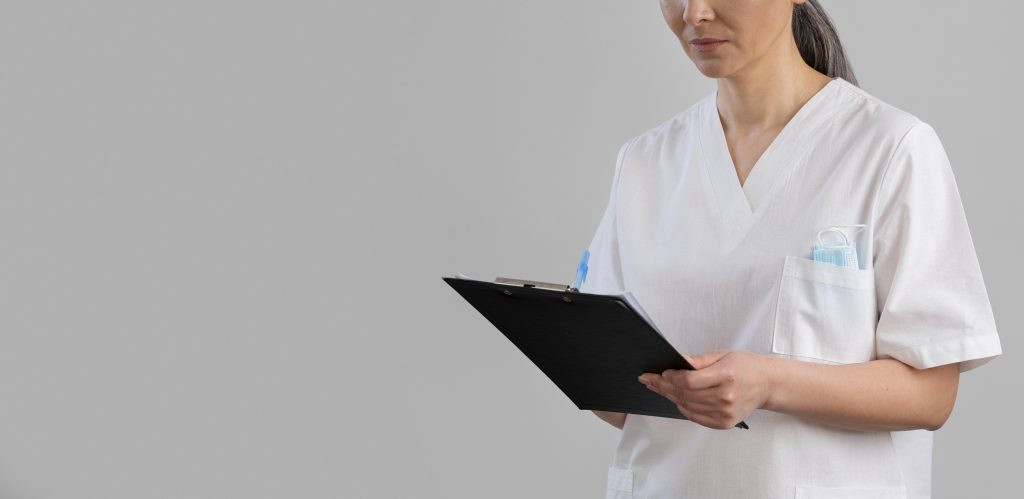
In an age of digital communication, the humble fax machine may seem like a relic of the past. However, in the healthcare industry, faxing remains a vital method of securely transmitting sensitive patient information and HIPAA fax cover sheets. Healthcare professionals and organizations prioritize HIPAA compliance to safeguard patient data privacy and security. HIPAA regulations cover electronic health records, data breaches, and even minor details like fax cover pages.
What is a HIPAA Fax Cover Sheet?
A HIPAA fax cover sheet is a document used to accompany and protect the transmission of sensitive and protected health information (PHI) via fax. HIPAA, which stands for the Health Insurance Portability and Accountability Act, is a U.S. federal law that mandates the protection and privacy of individuals’ health information.
When transmitting PHI, healthcare providers, insurers, and other covered entities are required to take appropriate measures to ensure its confidentiality and security. A HIPAA fax cover sheet meets necessary requirements by including essential information and disclaimers for protected health information.
The HIPAA fax cover sheets typically includes the following elements:
- Confidentiality Statement: This statement confirms the confidentiality and HIPAA protection of the transmitted information.
- Sender and Recipient Information: The cover sheet includes the name, address, phone number, and fax number of both the sender and the intended recipient.
- Date and Time: The cover sheet displays the date and time of the fax transmission.
- Number of Pages: It specifies the total number of pages included in the fax transmission, enabling the recipient to verify if any pages are missing.
- Instructions for Handling: The cover sheet may include specific instructions for the recipient regarding the handling, storage, and disposal of the faxed documents.
- Disclaimer Notice: It includes a notice instructing the recipient to notify the sender and delete/destroy the fax and its attachments if received in error.

Does HIPAA Require a Fax Cover Sheet?
The simple answer is no. HIPAA regulations do not explicitly state that healthcare providers or other covered entities must include a cover sheet with all the faxes they send.
However, healthcare providers and other covered entities consider attaching a cover sheet a best practice, even though it is not directly required.Let me provide you with a scenario to illustrate why this is the case.
Imagine you work at a general practitioner’s office that deals with a large number of patients. Among the patients coming in with flu and strep throat, it’s inevitable that the head doctor will eventually encounter a client who requires the services of a specialist. One day, a patient presents with a foot problem that our office cannot treat. Fortunately, the experienced doctor has a reliable list of podiatrists to refer the patient to, ensuring continued care. The patient selects a specialist and informs the doctor. After the initial appointment, the doctor needs to send the patient’s medical records to the specialist so that they can prepare for the referral.
The doctor delegates the task of sending the information to you, the practice manager. You choose to fax the information to the specialist, a common practice employed by thousands of healthcare organizations every day.
However, this is where a problem arises. While sending the patient’s records via fax is secure, what happens next becomes an issue. The records you sent are printed out at the specialist’s office and sit on the printer’s shelf for an entire day.
In other words, anyone who passes by the fax machine during that workday could potentially view the patient’s records. Technically, this constitutes a violation of HIPAA regulations, and both organizations share the responsibility. It’s your fault for not safeguarding sensitive patient information, violating the Security rule.

Why Do You Need a HIPAA-Compliant Fax Cover Sheet?
HIPAA fax cover sheets serve to mitigate the risks associated with transmitting sensitive data to another organization. They provide an additional layer of protection, safeguarding your organization from potential breaches.
To illustrate this point, let’s go back to the previous scenario. A cover sheet would have reduced the significance of the faxed patient record left unattended at the podiatrist’s office for a day.
The presence of a cover sheet would have prevented unauthorized individuals from catching a glimpse of the patient’s records as they passed by. It acts as a barrier, shielding the information from wandering eyes.
Even if your organization operates in a paperless environment, where electronic formats are predominantly used (as was the case for around 90% of healthcare entities in 2017), incorporating electronic fax cover sheets remains essential. They help ensure compliance with the technical safeguard requirements mandated by the Security Rule. They ensure access control by limiting data access to authorized individuals only.
What Should My Cover Sheet Contain?
Now that we have established the benefits of using a fax cover sheet for compliance purposes, the next question arises: “What should be included in the cover sheet?”
While HIPAA doesn’t require these sheets for compliance, including certain information is prudent. Doing so helps further mitigate risks and enables the recipient to identify the transmitted information without compromising security.
Your cover sheets should typically include the following:
- Your organization’s name and/or branding.
- The name of the employee who is sending the information.
- Your organization’s contact details, such as phone number, email address, and physical address.
- The date and time of sending.
- The fax number to which the information is being sent.
- A fax cover sheet disclaimer that has been reviewed by your corporate counsel.
Including this information benefits both parties by facilitating document identification without excess. A well-designed cover sheet ensures secure and prompt delivery of patient records without violating HIPAA.
Conclusion
In conclusion, despite the perception that faxing is becoming outdated, it remains one of the most secure methods for transmitting sensitive data between organizations. This is particularly crucial for healthcare facilities and other entities handling highly confidential information. However, the security of faxing does not guarantee protection against HIPAA violations and breaches.
Medical professionals and administrators cannot solely rely on the trustworthiness of their recipients. A notable example is the seventh-largest HIPAA fine in history, which resulted from a breach caused by a business associate.
Therefore, attention to detail is paramount. Using a HIPAA fax cover sheets can prevent penalties and ensure compliance with privacy regulations.







